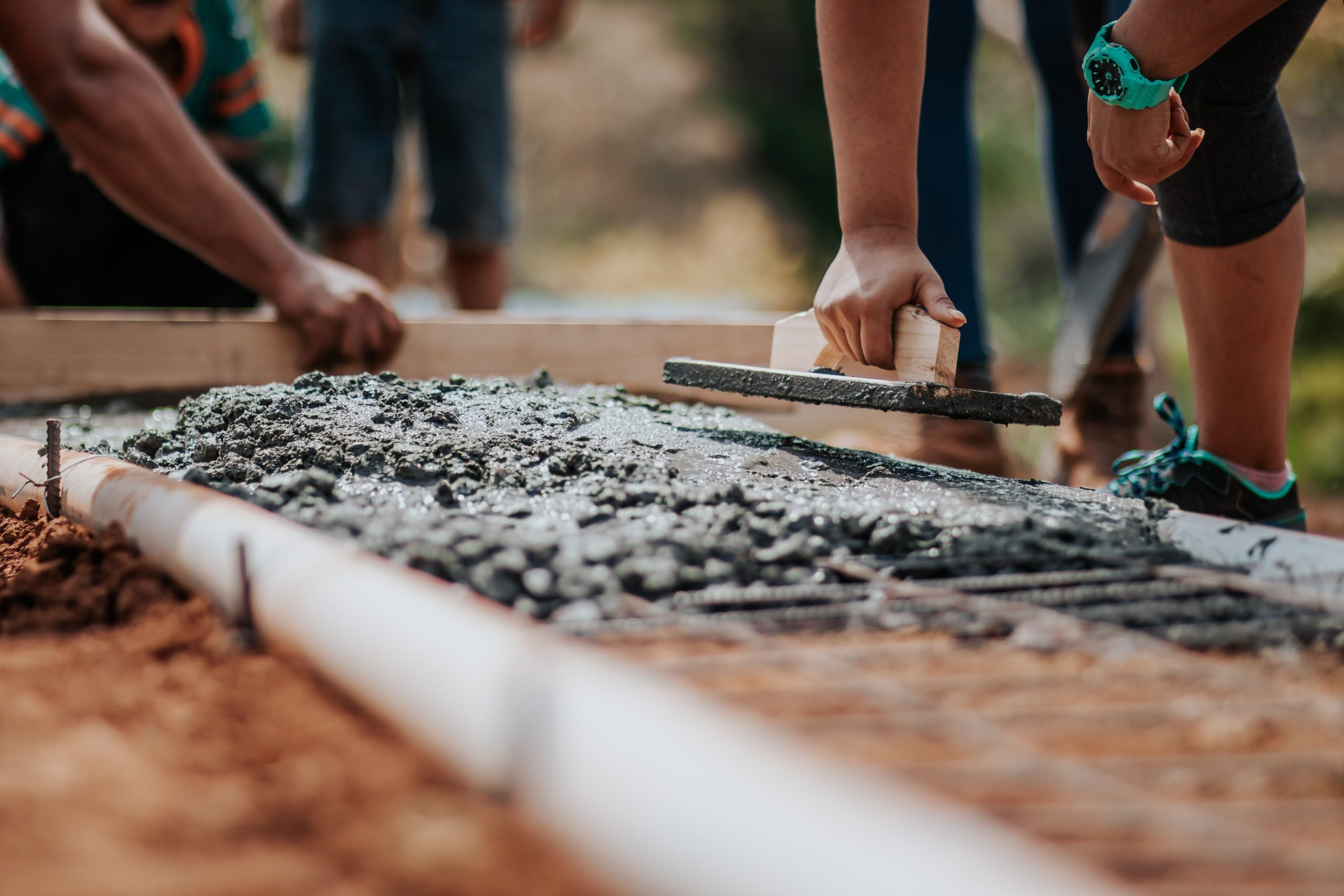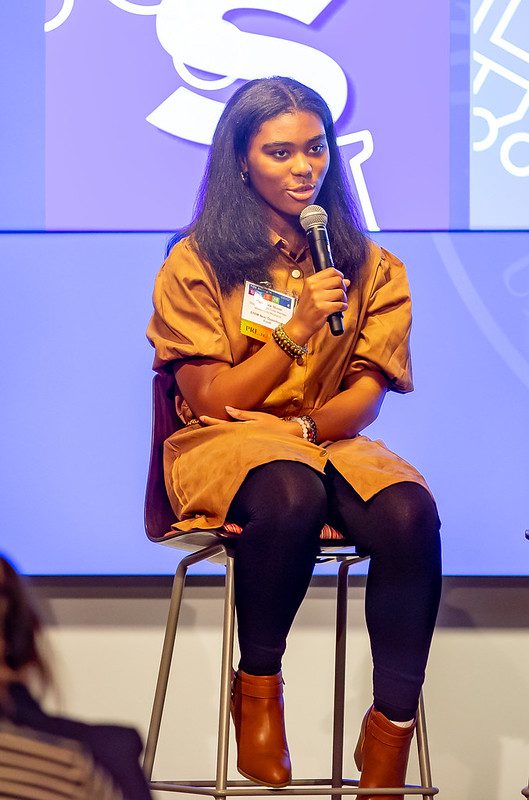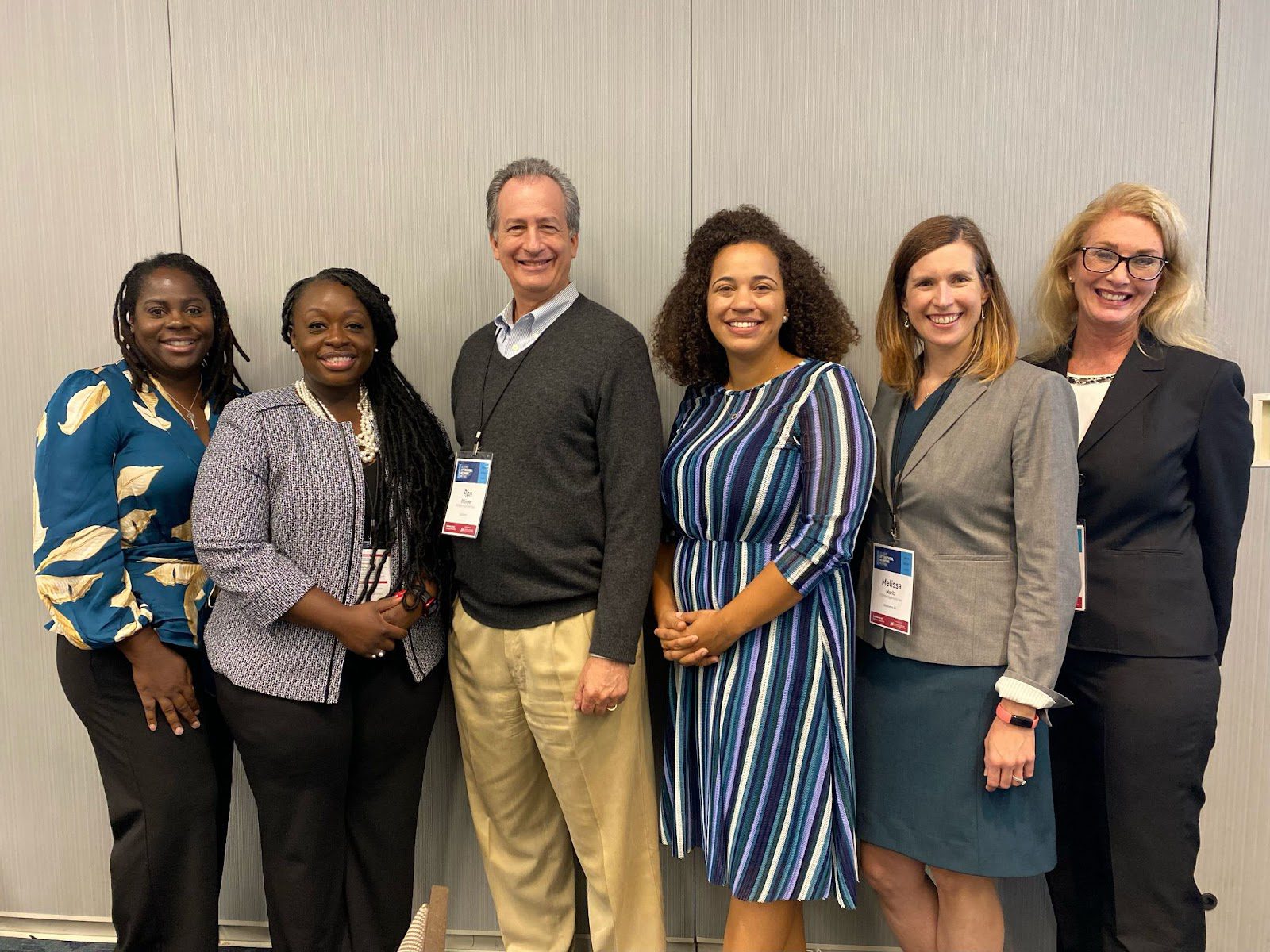As we close out 2022, STEM Next reflects on some of the big policy opportunities that the year brought for out-of-school time (OST) STEM learning. Just in case you missed any of these milestones, we wanted to close out the year with our list of OST STEM policy highlights of 2022.
8) Space Council Meeting and the potential formation of a STEM Office at the Department of Education
Led by Vice President Kamala Harris, the National Space Council held a meeting on September 9, 2022. The meeting focused on the importance of space exploration and the potential for space to get young people inspired about real applications of STEM learning. The Fact Sheet released included commitments from organizations to uphold this focus. We were so grateful that STEM Next’s Million Girls Moonshot was highlighted for the expansion of the Flight Crew, a youth ambassador program seeking to inspire more girls to pursue STEM.
Another highlight of the meeting was when the Vice President tasked the Department of Education with creating a plan to create a STEM Office, further demonstrating the Department’s leadership to advancing STEM learning in and outside the classroom.
With 2023 on the horizon, and we watch to see what the FY23 budget will hold, we encourage our partners and the larger OST field to continue to share your stories of impact (get some ideas from our November blog). We are thrilled that STEM and OST have been bipartisan issues and believe that can continue as we tell more stories about the power of afterschool and summer STEM learning.
7) Bipartisan Safer Communities Act
The Bipartisan Safer Communities Act included an additional $50M for the Nita M. Lowey 21st Century Community Learning Centers, which support afterschool programming for youth attending the lowest performing schools and in low income communities.
OST programs are a significant safe space for young people to go outside of the school day. This legislation recognizes that afterschool and summer programs create safer communities, in addition to their important role in engaging students in meaningful learning experiences.
6) Bipartisan Infrastructure Law
This legislation is estimated to add 1.5 million jobs each year for the next ten years. Most of these jobs have some elements of STEM knowledge required, making a case for sustained, high-quality STEM learning. The law also addresses major areas of disparity throughout the country to combat issues from infrastructure leading to unsafe drinking water to access to public transportation to universal broadband access for all.
Kids can’t learn if they can’t get to school or programs. It’s challenging to think when you don’t have clean drinking water at home. People are excluded from important opportunities if they don’t have access to the internet. Building a foundation of safe and supportive local environments allows students to engage in their learning and their futures.
This bipartisan law is shaping the labor market, creating hundreds of thousands of jobs, and allocates a landmark amount of money to accomplish this. It was inspiring that the CHIPS + Science legislation not only supports industry, but also authorizes many STEM engagement programs, across federal agencies, that will create the necessary workforce for the growing global industry.
This comprehensive piece of legislation has the potential to shape STEM learning, STEM careers and help to diversify the workforce in a very significant way for our country. CHIPS + Science authorizes $174B for investment in STEM programs, workforce and R&D. Included in that $174B is $81B for the National Science Foundation, which would support critical STEM education programs. We are still waiting to see the final FY23 appropriations to know what the funding levels will look like for programs next year.
4) National Partnership for Student Success
The National Partnership for Student Success is a joint effort between the Department of Education and AmeriCorps that focuses on increasing the number of trusted adults who are supporting the wide range of needs that students might have. This might include increasing access to tutors, mentors, and post-secondary career coaches that help young people navigate their next steps.
So much of this important guidance and career exploration happens in out-of-school learning spaces. This collaboration lifts up the work and additional resources necessary for OST providers to expand these services for youth around the nation and models the partnerships between agencies that are critical to break down silos and ensure student success.
3) White House Launches the STEM Opportunity Alliance with AAAS
We loved following along with the White House’s Time is Now Initiative this year. It is so meaningful that the White House Office of Science and Technology Policy (OSTP) reached out to the community to elicit feedback and better understand the lived experiences of individuals in STEM learning. By gaining insight into the challenges and success of communities, it is the hope that more informed policies and initiatives can be introduced that eliminate barriers and bolster things that are working to advance STEM learning.
STEM Next was thrilled to participate in the launch of the new STEM Opportunity Alliance and we look forward to supporting this new collective impact effort in whatever way we can. We loved that out-of-school learning was so prominent in the launch event and in the goals of the initiative.
With the launch of You Belong in STEM initiative, the Department of Education took a more active role in supporting the development of a STEM identity both in and out-of-school. They highlighted the reality that millions of students in our country have not been supported in STEM learning and STEM careers.
On December 7, 2022, the Department of Education hosted a National Coordinating Conference for YOU Belong in STEM, to include stories from students and educators about their experiences in STEM education.
Million Girls Moonshot’s Flight Crew member, MacKenzie G. spoke about her experiences in afterschool robotics. MacKenzie, a 14-year-old student from North Carolina shared her initial reluctance to get involved in STEM, but through inspiring experiences in afterschool STEM her interest grew. She even realized that she had built an engineering mindset through her opportunities to work in teams and solve problems.
We know that building a STEM identity is critical for young people to persist in STEM learning and STEM careers and yet, so many students are given implicit and explicit messages that they don’t belong in STEM. YOU Belong in STEM aims to create the conditions for more young people to thrive in STEM, especially those who have been historically excluded from STEM opportunities.
STEM Next is excited to see the Department of Education take such an active role in STEM education, including a particular approach to STEM learning that is centered in diversity, equity, inclusion and belonging and the lived experience of young people. We were pleased that our commitment was highlighted in the announcement, and that STEM Next, along with our partners, presented a breakout session on STEM learning in OST.
Digital Harbor Foundation ran a hands-on design challenge for session participants followed by an engaging panel featuring Nikole Collins-Puri, Chief Executive Officer, Techbridge Girls, MacKenzie G, Flight Crew Member, Million Girls Moonshot, STEM Next Opportunity Fund, Jodi Grant, Executive Director, Afterschool Alliance, Alfred Mays, Chief Diversity Officer and Strategist, Senior Program Officer – Diversity and Education, Burroughs Wellcome Fund, Stephen M. White, Esq, Chief Strategy Officer, Center of Science and Industry (COSI) and Teresa Drew, STEM Next’s Deputy Director. The panelists discussed the critical importance of OST STEM programs in supporting belonging and tangible strategies programs can use to support belonging for students who have been traditionally excluded from STEM learning such as students of color, girls and girls of color.
It is not every day that a Secretary of Education puts out a call to action to ensure universal access to high-quality afterschool and summer learning. But that is exactly what Secretary Cardona did in July of 2022 with the launch of Engage Every Student. Secretary Cardona has consistently applauded and looked to out-of-school learning to support our nation’s kids in recovering from the pandemic. Secretary Cardona was joined by Secretary of Labor Marty Walsh who announced the winners of the 2022 Workforce Pathways for Youth Competition and discussed the importance of youth employment.
Not only did the launch of this initiative validate the hard work OST programs have been committed to for years, but it also focuses on supporting state education agencies and districts to spend the significant federal funds available from the American Rescue Plan to expand enriching OST programs for young people.
Additionally, this initiative honed in on the importance of partnerships to ensure that all young people have access to OST programs. In our opinion, meaningful partnerships are the best way to make a lasting impact for communities, families and children.
While we know there is a lot of work to be done to ensure equitable access to OST learning, the administration certainly inspired the STEM Next Opportunity Fund’s team. We are thrilled to continue to focus our efforts on OST STEM and deepen our own collaborations in service of engaging learners everywhere.
As we conclude the year, we want to extend a special thank you to the STEM Next Opportunity Fellows!
In 2021, STEM Next started expanding our Fellowship program and launched the STEM Next Opportunity Fellows Network. Our Network started with one Fellow at the Department of Education and by the end of 2022, STEM Next is proud to host eight Fellows, serving across three federal agencies and the White House. The program continues to grow and STEM Next hopes to support additional Fellows in the coming year.
STEM Next Fellows are subject matter experts, with significant experience in OST STEM learning and youth development. They are incredible individuals. We are so lucky to have them serving in federal offices and agencies.
We look forward to sharing more policy updates with you in the New Year!






